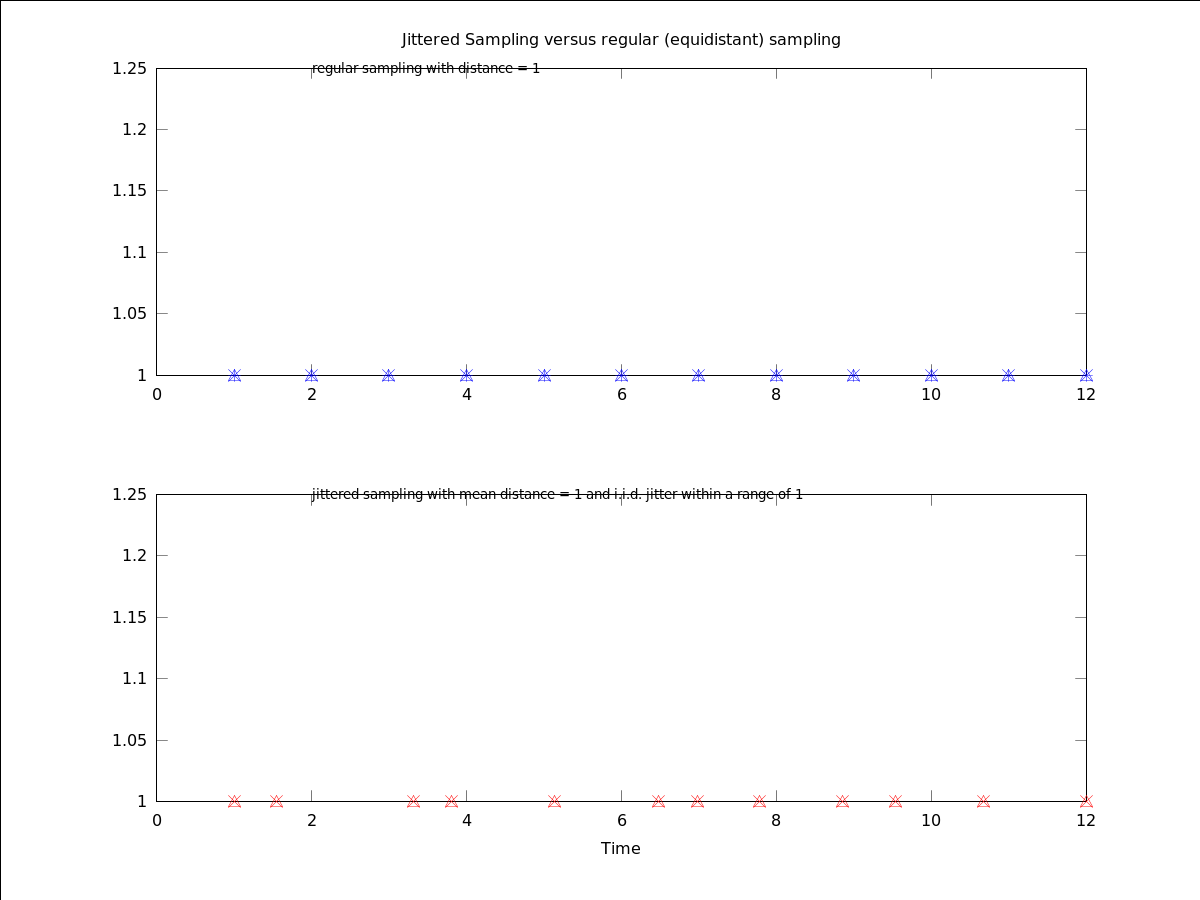
|
Octave-Forge - Extra packages for GNU Octave |
| Home · Packages · Developers · Documentation · FAQ · Bugs · Mailing Lists · Links · Code |
jitxp = irsa_jitsp (Tm, jit, N [, rfunc])
Generate N sampling points with a minimum distance Tm and an additional random distance jit with random distribution rfunc
Input:
Tm : Scalar – mean sampling period
N : Scalar – number of sampling points to generate
jit : Scalar – factor in [0,1] describing the part of Tm which is jittered.
rfunc: String (i.e. in quotes) of a random distribution function. Has to take the number of rows as the first and the number of columns as the second argument. Default is 'rand'.
rmin : Scalar – Lower limit of random distribution function computed with rfunc
rmax : Scalar – Upper limit of random distribution function
Output:
jitxp : Columnvector – sampling points with a jitter
Note:
1) The first sampling point will be 0, the last (N-1)*Tm. No jitter is added to them.
2) If you use a random distribution function and dont give a upper or lower limit it's assumed to be limited by its present computed maximum or minimum values.
The following code
N = 12;
eqxp = irsa_jitsp( 1 , N, 0 ) + 1;
jitxp = irsa_jitsp( 1 , N, 1 ) + 1;
o = ones(N,1);
## Plot
figure();
legend('off');
axis([0,13,0,1.5]);
subplot( 211 );
plot( eqxp, o, '^b', eqxp, o, '*b' ); text(); title("");
title( "Jittered Sampling versus regular (equidistant) sampling" );
text( 2,1.25, 'regular sampling with distance = 1' );
subplot( 212 );
plot( jitxp, o, '^r', jitxp, o, 'xr' ); text;
xlabel( "Time" );
text( 2,1.25, 'jittered sampling with mean distance = 1 and i.i.d. jitter within a range of 1' );
Produces the following figure
| Figure 1 |
|---|
 |